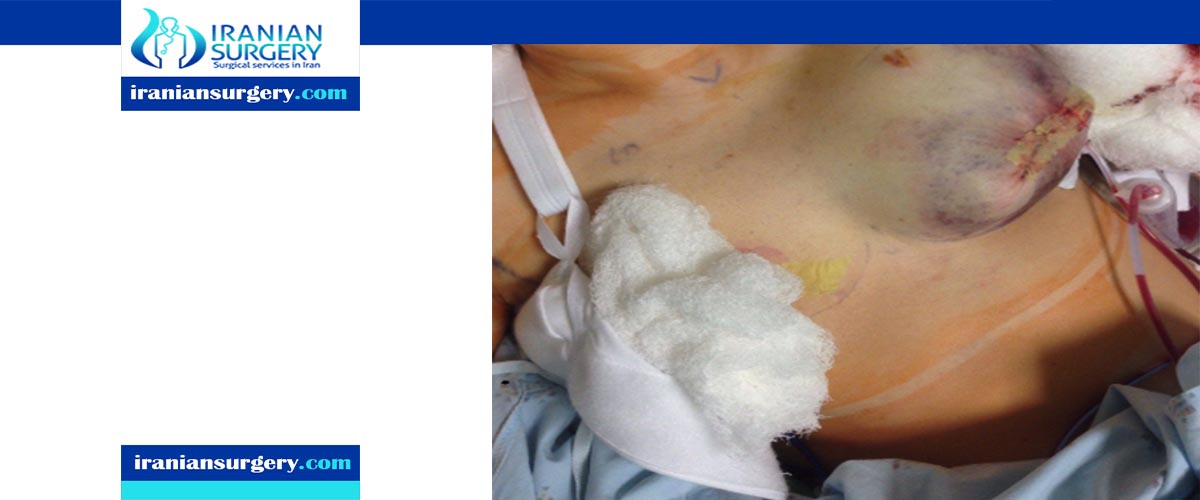Breast implant risks

Risks of Breast Implants
There are risks associated with all breast implants, including:
. Additional surgeries
. Breast implant associated-anaplastic large cell lymphoma (BIA-ALCL), which is a cancer of the immune system.
. Systemic symptoms, commonly referred to as Breast Implant Illness (BII)
. Capsular contracture (scar tissue that squeezes the implant)
. Breast pain
. Rupture (tears or holes in the shell) of saline and silicone gel-filled implants
. Deflation (with visible change to breast size) of saline-filled implants
. Silent (without symptoms) rupture of silicone gel-filled implants
. Infection
. Creases or folds in the implant
. Blood clots
. Bleeding
. Change in breast shape, volume, or sensation
. The implant rotating within the breast, resulting in an abnormal shape
. Adverse reaction to anesthesia
Read more about : Mastectomy
You should also be aware of a possible link between breast implants and a rare type of immune system cell cancer called anaplastic large cell lymphoma (ALCL).
A very small number of women who've had breast implants have developed ALCL in the scar tissue around their breast implants.
If you are of an age in which you get regular mammographic examinations, it will be important for you to select a radiology technician who is experienced in taking x-rays of augmented breasts. Additional views of your breasts are often required.
Your aesthetic plastic surgeon, in some instances, may recommend other types of examinations, such as ultrasound or magnetic resonance imaging (MRI). It is possible that the presence of breast implants could delay or hinder the early detection of breast cancer.
You can help minimize certain risks by following the advice and instructions of your board-certified plastic surgeon, both before and after your breast surgery.
Signs that replacement or removal is necessary
The following complications may necessitate breast implant removal.
. Hardening
Many people develop capsular contracture, or hardened scar tissue around one or both implants.
This can also cause tightness, pain, tenderness, and abnormal cosmetic changes to the breast.
In some cases, hardening may happen more than once to the same breast.
. Saline rupture (leakage and deflation)
If a saline breast implant ruptures because of a tear or hole in the implant’s shell, it will begin to deflate like a balloon.
The saline in your implant will leak out and get reabsorbed by your body. This leak can happen all at once or slowly over the course of a few days.
The deflation may not become obvious until all of the saline leaks out. The affected breast will lose its size and shape and look dramatically different from your other breast.
Breast implant ruptures are rare in the first few years, but the risk does increase over time.
. Silicone rupture (silent rupture)
Silicone implants can also rupture.
Silicone gel is much thicker than saline. When a silicone implant ruptures, the gel will often stay inside the implant or surrounding scar tissue.
Because of this, ruptured silicone implants often go unnoticed. That’s why silicone ruptures are also known as silent ruptures.
Most people don’t experience any symptoms. When symptoms are present, they can include:
. Decreased breast size
. Hard knots
. An uneven appearance of the breasts
. Pain or tenderness
. Tingling
. Swelling
. Numbness
. Burning
. Changes in sensation
Although the exact rate of silicone rupture is unknown, it’s estimated to be somewhere between 2 and 12 percent.
Some implants rupture immediately, some after several years, and others after 10 years or more.
Read more about : Breast augmentation success rate
. Rippling and palpability
Rippling occurs when the implant develops wrinkles or ripples. Palpability refers to the ability to feel these ripples when you touch your breast. In some cases, these changes can also be seen through the skin.
If you see or feel wrinkling in your implant, you may want to consider replacing or removing it.
. Change in position
Breast implants don’t prevent your breasts from sagging as you age. Gravity is still going to take its toll. Weight gain and loss can also cause stretching and sagging of the breasts.
You may also notice that one breast hangs lower than the other, or that your nipples point in different directions than before.
If you’re bothered by these changes, getting a breast lift or implant replacement may help return your breasts to their previous appearance.
What to expect with implant removal
Any qualified plastic surgeon can remove your breast implants. It doesn’t need to be the same surgeon who did your first surgery.
During an initial consultation, the surgeon you choose will evaluate the state of your current implants and discuss your surgical options.
Depending on your preferences, your surgeon can do any of the following:
. Implant removal alone
. Implant removal and breast lift
. Removal of hardened or lumpy tissue
. Implant replacement with or without breast lift
Sometimes, implant removal alone can lead to cosmetic abnormalities. This includes:
. Deflation
. Sagging
. Dimpling
. Asymmetry
Because of this, your doctor may recommend replacing your implants with implants of a different size or shape.
Depending on the specifics of your procedure, you may be able to return home the day of your surgery. Recovery time differs for everyone.
Read more about : Fat transfer for breast augmentation
Read more about : Mommy makeover

